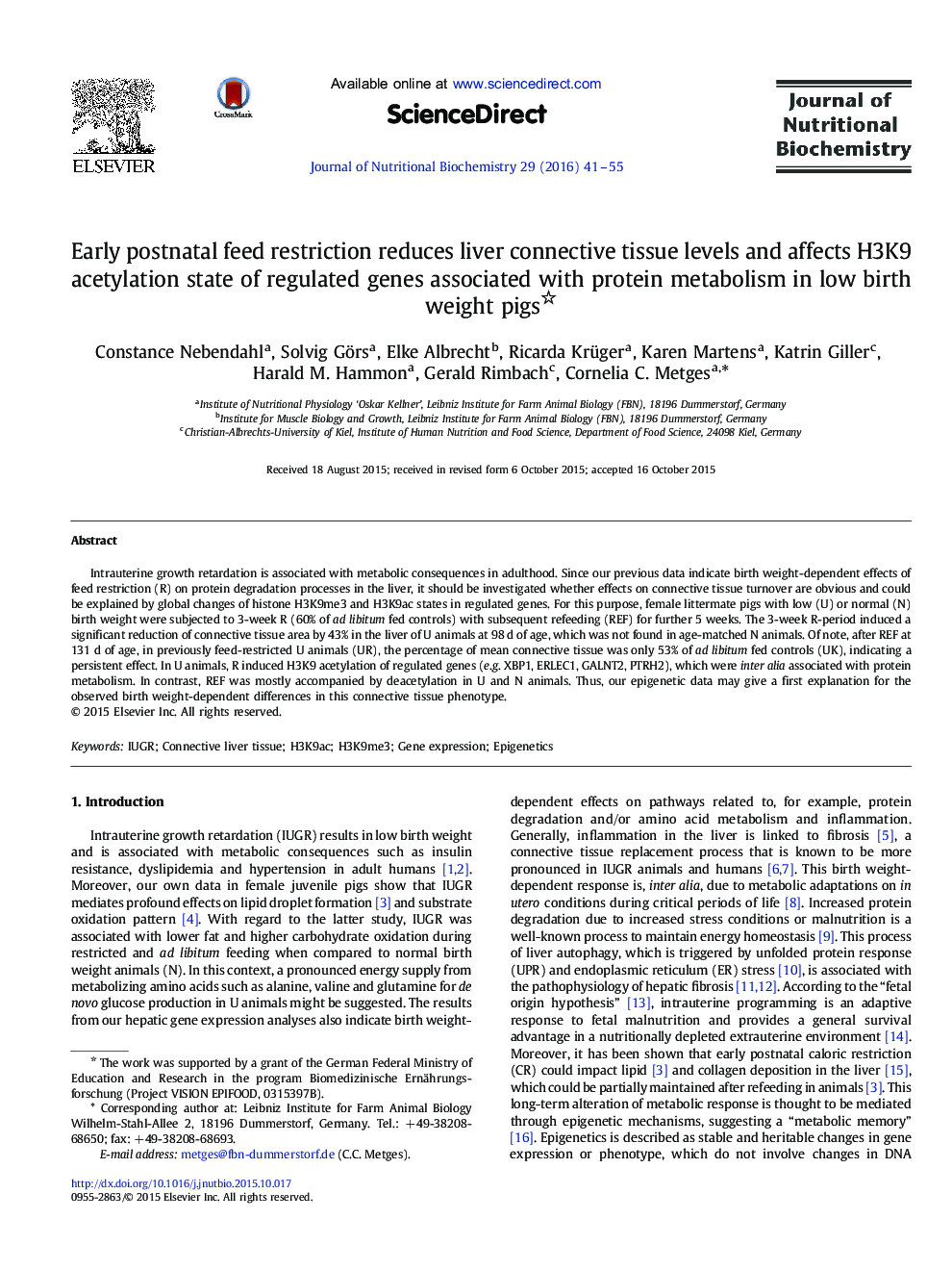| Article ID | Journal | Published Year | Pages | File Type |
|---|---|---|---|---|
| 1989582 | The Journal of Nutritional Biochemistry | 2016 | 15 Pages |
Abstract
Intrauterine growth retardation is associated with metabolic consequences in adulthood. Since our previous data indicate birth weight-dependent effects of feed restriction (R) on protein degradation processes in the liver, it should be investigated whether effects on connective tissue turnover are obvious and could be explained by global changes of histone H3K9me3 and H3K9ac states in regulated genes. For this purpose, female littermate pigs with low (U) or normal (N) birth weight were subjected to 3-week R (60% of ad libitum fed controls) with subsequent refeeding (REF) for further 5Â weeks. The 3-week R-period induced a significant reduction of connective tissue area by 43% in the liver of U animals at 98 d of age, which was not found in age-matched N animals. Of note, after REF at 131 d of age, in previously feed-restricted U animals (UR), the percentage of mean connective tissue was only 53% of ad libitum fed controls (UK), indicating a persistent effect. In U animals, R induced H3K9 acetylation of regulated genes (e.g. XBP1, ERLEC1, GALNT2, PTRH2), which were inter alia associated with protein metabolism. In contrast, REF was mostly accompanied by deacetylation in U and N animals. Thus, our epigenetic data may give a first explanation for the observed birth weight-dependent differences in this connective tissue phenotype.
Related Topics
Life Sciences
Biochemistry, Genetics and Molecular Biology
Biochemistry
Authors
Constance Nebendahl, Solvig Görs, Elke Albrecht, Ricarda Krüger, Karen Martens, Katrin Giller, Harald M. Hammon, Gerald Rimbach, Cornelia C. Metges,
